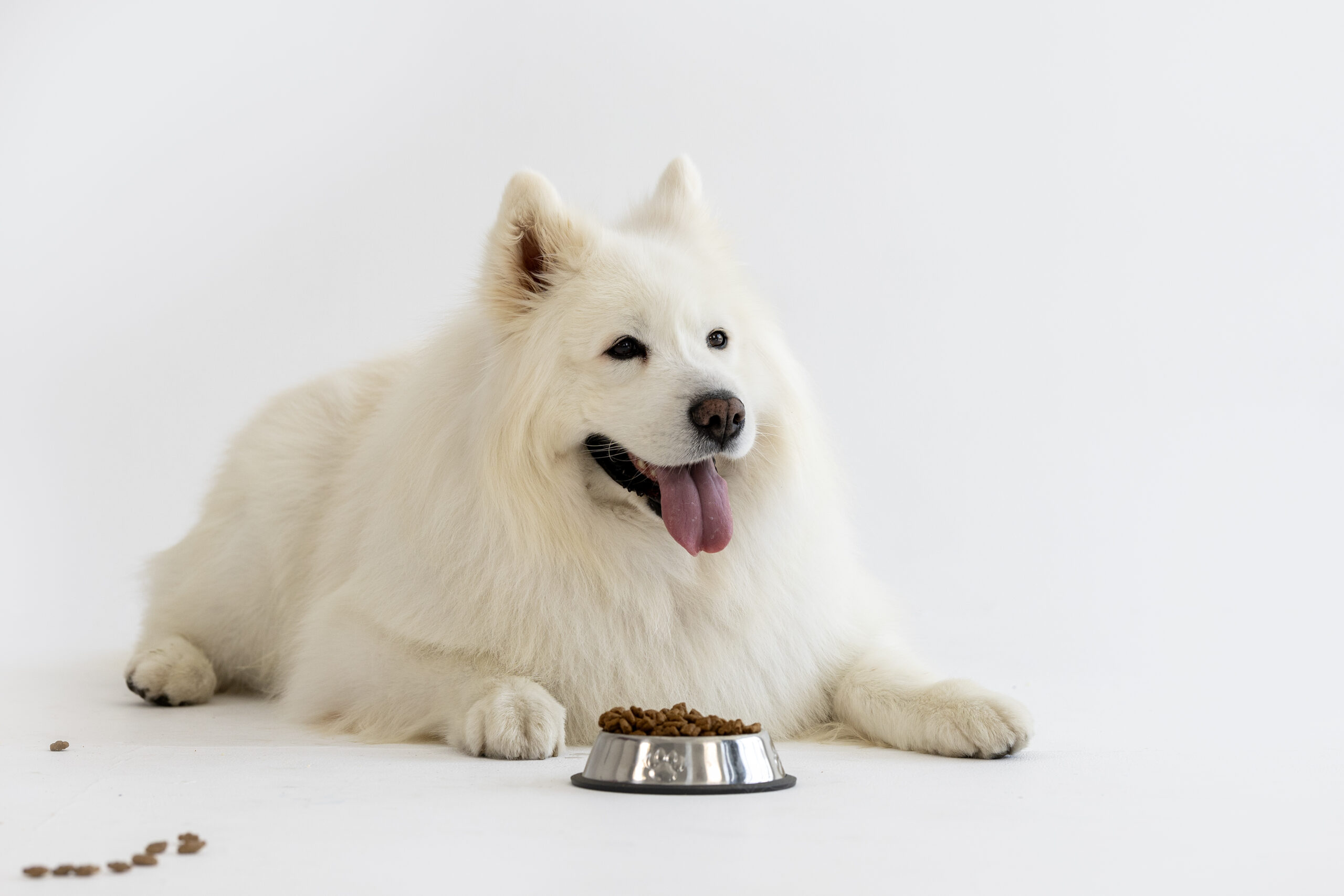How can we best take care of our four-legged friends? Naturally, by choosing the right, fully balanced food for them. However, making the right decision is often difficult—especially when there are so many options and questions surrounding proper nutrition.
What should dog food contain to be considered balanced and essential for a companion animal?
It requires high-quality raw ingredients and the proper balance of essential nutrients.
High-Quality Ingredients
Dog food must fully meet the nutritional needs of our four-legged companions. It should be created by food experts and go through strict laboratory controls before production. Raw materials should only be used in the manufacturing process after undergoing thorough quality checks.
High-quality ingredients in dog food—without artificial flavor enhancers or low-grade by-products—ensure that dogs receive the right amount of nutrients in a balanced way. Artificial fillers, preservatives, and excessive grains may lead to obesity, allergies, and even chronic diseases. In contrast, dogs digest high-quality food better than those made with lower nutritional value.
Investing in quality dog food can help reduce veterinary costs and prevent long-term health issues.
Balanced Formula & Nutritional Value
Dog food should not only offer a delicious experience but also provide balanced nutritional value. Ideally, it should include all essential minerals needed to support vital functions and meet all of the dog’s dietary needs. The selected formula should offer beneficial substances in the correct proportions. For immune support, it should be rich in antioxidants and omega fatty acids.
Regardless of breed, your furry friend needs high protein content for overall well-being. Protein is the building block of a dog’s body and should make up 20–25% of the dry food’s energy value. High-quality animal proteins (chicken, turkey, beef, lamb, fish) support muscle tone, a strong immune system, healthy skin, and a shiny coat.
Unlike proteins, carbohydrates—known as a source of energy—should make up 35–40% of the food’s energy value. This percentage should also include enough fiber to support digestion.
Fats are also essential for the stable functioning of the endocrine system, as many vitamins from food are fat-soluble. The remaining portion of the diet should consist of vitamins and minerals, which aid in chemical processes, support gut microbiome health, and regulate blood sugar levels.
The balance of vitamins (e.g., A, D, E, and B) and minerals (e.g., calcium, phosphorus, and magnesium) must be carefully maintained. These are crucial for nervous system development and healthy bone tissue. To support joint health, the presence of glucosamine and chondroitin sulfate in the food is also important.
What to Consider When Choosing Food?
Your Dog’s Age
From energy to protein, minerals, and vitamins—the food should meet the needs of adult dogs. Adult dogs have different nutritional requirements than puppies. During early development, puppy food must contain more protein, fat, calcium, phosphorus, sodium, and chloride to support growth. In contrast, adult dogs require fewer calories and specific nutrients to support joint health.
If a large breed dog is fed puppy food, it may take longer for it to reach the appropriate size for its breed. Therefore, the nutritional balance of the food must be carefully calculated. For adequate energy and to prevent weight gain, food for adult dogs should contain a balanced amount of proteins, fats, and carbohydrates. With the right balance, vital organs like the kidneys and liver will also be protected from overload.
While adult and senior dogs’ diets may be similar in terms of ingredients, it’s essential to choose food that offers a balanced mix of fats, antioxidants, and proteins to help preserve muscle mass.
Your Dog’s Health Condition
If your dog is pregnant or has health concerns, it’s best to choose food based on a consultation with a pet nutritionist.
Large breed dogs are often at risk for orthopedic conditions, so they should be fed less concentrated food to support a steady growth rate. In this case, choose food that contains glucosamine and chondroitin to support joint function.
If your dog is prone to digestive issues or overweight, low-calorie food can help improve both physical well-being and digestion/metabolism.
How to Transition Your Dog to New Food?
If you’re planning to switch your dog’s food, do it gradually and without pressure. To avoid stress caused by sudden changes, start by offering the new food (25%) mixed with the old food (75%).
After three days, change the ratio to 50/50. Over the next two days, increase the new food to 75% and reduce the old food to 25%. After that, you can fully transition your dog to the new food.
A gradual approach is important. This method allows your dog’s digestive system to adjust smoothly to the new diet without discomfort.







